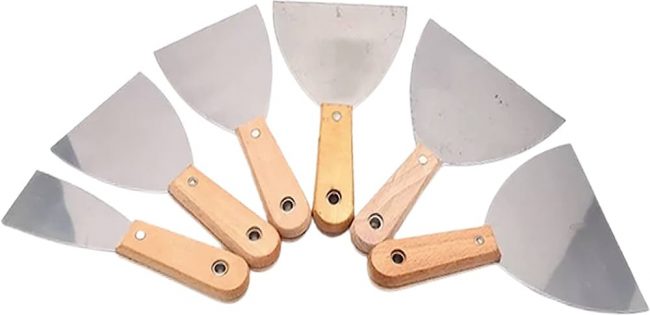Project Report For Putty Knife
Introduction
Project Report For Putty Knife Is As Follows.
A putty knife, also known as a scraper or a filler knife, is a multipurpose instrument used largely in the building, painting, and woodworking industries. A flat, thin metal blade with a handle connected to one end is usual. A putty knife’s principal use is to scrape or distribute materials such as putty, filler, caulk, plaster, or other similar compounds. The shape of the blade enables for the effective removal of old paint, wallpaper, or glue from surfaces, making it an indispensable tool in surface preparation activities. The flat, stiff blade allows for excellent scraping while avoiding damage to the underlying surface.
Putty knives are available in a variety of sizes, ranging from 1 inch to 5 inches in width. The application of the blade is determined by its size. Smaller putty knives are better for intricate tasks like fixing nail holes or cracks, whilst bigger ones are better for broader areas. Putty knives are also used for spreading and smoothing materials in addition to scraping. They are frequently used to apply putty or filler to fix flaws in walls, woodwork, or other surfaces. The flexible blade makes it simple to distribute and shape the material, resulting in a smooth and uniform finish.
In addition to building and painting, putty knives are used in woodworking for activities such as removing excess glue, clearing out tight places, and adding wood filler. They may also be used in other craft endeavours including as sculpting and mould manufacturing. Putty knives are often composed of stainless steel or carbon steel, which ensures durability and resistance to corrosion. Some types include handles made of wood, plastic, or rubber for a more comfortable grip and greater control while in use.

Benefits Of Putty Knife
Surface Preparation: Putty knives excel in surface preparation chores. They effectively remove old paint, wallpaper, or glue off surfaces while causing little damage. This gives a clean and smooth surface for the application of fresh materials.
Filling and Smoothing: Putty knives are great for filling cracks, holes, and irregularities in surfaces. They enable accurate application of putty, filler, or caulk, resulting in a smooth and professional finish. The blade’s flexibility allows for smooth material distribution and shaping.
Versatility: Putty knives are useful instruments used in a variety of sectors such as building, painting, carpentry, and crafts. They may be used for scraping, spreading, cleaning, and sculpting, making them useful for a variety of activities.
Time and cost savings: Using a putty knife saves time and effort by completing surface preparation and filling operations effectively. It reduces the need for extra tools or equipment, lowering total costs and increasing project efficiency.
Get Completely Custom Bankable Project Report
Market Potential Of Putty Knife
The market for putty knives was worth USD 6.9 billion in 2021 and is expected to increase at a CAGR of 6.2% from 2022 to 2030. the worldwide putty knife market might exceed USD 60 billion by 2030.
The rising demand for putty knives in commercial and domestic applications is driving market expansion. Knives with stubborn blades dominate the market, making up more than two thirds of all sales in 2018. Because of their great performance and longevity. Because of their simplicity of use and low maintenance requirements, flexible blade putty knives are gaining favour.
However, for particular purposes such as building and manufacturing, stiff-blade putty knives are favoured over flexible ones. Commercial applications are expected to account for the majority of the entire market in 2022, followed by home applications in 2030.
In 2019, the commercial application segment led the worldwide putty knife market, accounting for more than 60.0% of total revenue. The increase in building activity can be ascribed to expanding urbanisation and rising disposable income levels among consumers in emerging nations such as India, China, and Brazil.
Furthermore, an increase in infrastructure development projects across many areas is likely to improve product demand throughout the projection period. Household applications accounted for a lesser percentage as compared to commercial applications due to a strong preference by households for sharp blades over blunt ones due to safety concerns about children playing around kitchen areas while using utensils made of plastic or metal.

